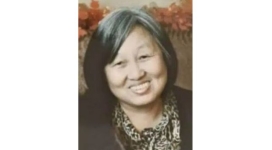
Audi has completed work on its new flagship SUV, the Q7, and invited various car reviewers to take it out on a test drive.
Paul Horrell of Top Gear took it out on a spin, and he reported that the original Q7 was "built on an outdated and heavy platform" and felt "huge outside but cramped inside." However, Audi appeared to have built the newest Q7 from scratch using Volkswagen's "MLB Evo" platform components.
"It's got aluminum suspension, a body that's largely aluminum too, and a whole lot of other weight-saving in the powertrain, cooling, exhaust, electrics, seats, whatever," Horrell wrote. "Makes you wonder why it was so chunky before, but anyway they have taken more than 300kg out of it. That means it's the lightest big seven-seat SUV."
Horrell added that the Q7 felt "big and imposing" as he drove it, despite the fact it came with "variable torque split for the standard Quattro drive." He noted that Audi can even put in an "optional four-wheel-steer to keep it on course."
"The main thing is, admirably, Audi hasn't tried too hard to disguise the Q7's nature. It's not pretending to be sporty," Horrell wrote. "Its character is leisurely and refined, and it feels like a big comfy social means of transport. The ride is pliant, the suspension and tires quiet. It's a wafter."
According to Horrell, Audi placed huge emphasis on the technology embedded in the Q7.
"There are times the Q7 will more or less drive itself," Horrell wrote. "In traffic it'll keep its lane and follow the car in front. [It's the] same on a motorway, though it beeps at you after 15 seconds or so if you've actually had your hands off the wheel."
Horrell added that other options for the Q7 included "self-parking" and "self-steering when reversing with a trailer or caravan." He then turned to the safety features of that SUV.
"Then there are the safety aids: early-warning and later emergency braking for vehicles or pedestrians or cyclists who stray into your path, autonomous braking if you turn across a junction in front of an oncoming vehicle, warnings if you park and open a door into a passing vehicle, or when you back out into a road when something's coming," Horrell wrote.
Horrell was impressed by the amount of room inside the Audi Q7.
"Actually there's more room inside now. It's still a seven-seater," Horrell wrote. "The standard-fit third-row chairs fold electrically, and they're more than tolerable for anyone under about 5ft 6in."
Overall, Horrell felt that the Q7 was "more of a big tall station wagon than a crossover." He thought it was a "boxy and bland" SUV that had "amazingly little road presence."
Sue Callaway of Fortune was invited to test drive the Q7 in the deserts of the African country of Namibia. She focused on the performance of Audi's SUV in comparison to its competitors.
"At 4,398 pounds, the Q7 is the lightest in its class and is more fuel efficient than its competitors from Mercedes and BMW-and 28 percent more efficient than the current Q7," Callaway wrote. "Rear-wheel steering tightens the Q7's turning radius by more than three feet at low speeds. At high speeds, the rear wheels steer with the front to increase stability-above and beyond what the lightened Quattro system already provides."
Callaway added that the Q7 could maintain "cruise-control speeds of up to 155 mph" thanks to its windshield-mounted camera and two front radar units. However, she managed to find one downside in the tech-saturated SUV.
"One of the downsides of the Q7 is, in fact, its vast array of competencies-which, I will guess, some owners won't ever fully appreciate or master," Callaway wrote.
Based on her experience, Callaway concluded that some people will enjoy driving this SUV more than others.
"The Q7 isn't for everyone; if you want a blinged-out mile-high ride, look elsewhere," Callaway wrote. "But if you appreciate cutting-edge engineering and radically refined systems, this could be your ride."







